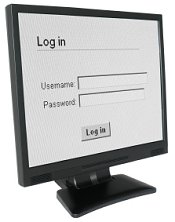I‘m always surprised when a client tells me, “oh, I don’t really answer e-mail, so call me if you have a question.” Whoa, what? You’re kidding, right?
 If you’re going to have a website, you need to have an e-mail address. You need to check it early and often, and reply promptly to all inquiries you receive through your site. Period. If you don’t have an e-mail address listed on your site, most potential customers will move along to your competitor, who does. A few may call you, but don’t bet the farm on it.
If you’re going to have a website, you need to have an e-mail address. You need to check it early and often, and reply promptly to all inquiries you receive through your site. Period. If you don’t have an e-mail address listed on your site, most potential customers will move along to your competitor, who does. A few may call you, but don’t bet the farm on it.
What’s behind this e-mail hate?
1) Kids. I have it on good authority that today’s teens have shunned e-mail, preferring instead to text their friends and family. A lot of teenagers won’t even call their friends until they’ve texted them first to make sure it’s a good time to call. So most parents I know have gotten out of the habit of e-mailing their kids, knowing full well they won’t get a reply, and their message, in all likelihood, won’t be read. Perhaps this has contributed to a perception among many adults that e-mail in general, doesn’t get read, so a text or a call are necessary when meaningful contact is required. In their minds, e -mail is for forwarding jokes.
2) Failure to grasp the basics of e-mail. I have many clients who simply never learned the basics of communicating through e-mail. They don’t have a clue how to set up a POP3 account, nor can they save,view, or add attachments, or file messages logically so they may refer to them later. I once had a client who printed out e-mail messages and put them in a file drawer! They have not learned how to filter out spam, auto-file messages, or empty their trash bins. Their subject lines aren’t relevant to the content of the message, and they often don’t include any subject line at all. They can’t forward, CC, BCC, or “reply all”. It’s understandable how this could lead to an avoidance of e-mail. But these skills can all be mastered easily and quickly.
3) Fear of written (typed) English. I never learned touch typing, but I’ve gained a lot of speed through daily practice. I rely heavily on spell checkers. Those of you who have been on the other end of an IM chat with me know how bad I really am! But e-mail isn’t instant. You can check your spelling, your grammar, punctuation, and capitalization before hitting ‘send’. You can also re-work a message for clarity just as long as you need to get it perfect. That’s the beauty of e-mail. Also — e-mailing gives you a written record of correspondence, and you’ll need that someday.
4) “I’m never at my computer”. Many of us don’t work typical desk jobs, and we’re on the move throughout the day. This isn’t a good excuse anymore. If you own a business, you really have to be accessible to your clients, and potential contacts, even if you’re on a roof, floating down the CT River, at the airport, or stuck in gridlock on I-95. During business hours, you need to figure out a way to check your e-mail account regularly using a cell phone, internet cafe, or other device.
5) Spam. The most common reason I hear for not wanting to include an e-mail address on a site is, “I’ll get spam”. Yes, you’ll get spam, but you’ll also get legitimate inquiries. We can send most spam packing directly to your trash bin. There are really good spam filtering tools now, so you don’t have to suffer like you did in 1994. Even on days when the filters are not perfect, it’s worth zapping some spam to get just one legitimate inquiry from a potential customer.
I will concede that newer, more direct and instant online communication tools may eventually replace e-mail as the preferred method of communication with your site’s visitors. I’m already seeing a huge increase in the number of sites with live help available, and I think that’s a very positive trend. But right now, we’re still at a point where a quick, direct e-mail message serves an important function. So get comfortable with e-mail, learn all you can about your e-mail program, and answer your messages quickly and completely.
